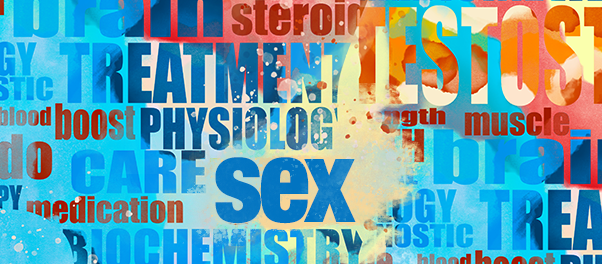- Common Mental Health Issues for Incarcerated Populations
- How is Mental Health Addressed in Prisons?
- Best Practices in Correctional Mental Health
- Treatment Modalities Adapted for an Incarcerated Population
- Pitfalls of Mental Health in Prisons
- Successful Mental Health Programs in Prisons
- Conclusion
- Additional Resources on Correctional Mental Health
Common Mental Health Issues for Incarcerated Populations
Mental health issues in incarcerated individuals make the difficulties of being confined, isolated, and living in the prison setting even more challenging. This section includes some of incarcerated individuals' most prevalent mental health concerns.
It is important to note that the prevalence rates provided are general estimates. Actual rates of mental health disorders in the prison population can vary depending on the specific prison system, region, demographics of the incarcerated population, and more. In addition, efforts to address mental health issues in prisons, such as providing access to mental health services and implementing preventive measures, can impact the prevalence of these disorders within correctional facilities.
Depression
The isolation, loss of autonomy, and separation from loved ones that often accompany incarceration can contribute to feelings of hopelessness and despair.
Estimates suggest that anywhere from 15% to 30% or more of incarcerated individuals may experience symptoms of depression during their time in prison. In the general population, the 12-month prevalence of depression is estimated to be around 7%.
Anxiety Disorders
The stressors of prison life, such as overcrowding, violence, and uncertainty about the future, can contribute to heightened anxiety levels.
Approximately 15-20% of incarcerated individuals may experience anxiety disorders, while in the general population, the prevalence is around 18%.
Post-Traumatic Stress Disorder (PTSD):
Many incarcerated individuals have experienced traumatic events before or during prison. Trauma stemming from past abuse, violence, or other traumatic experiences can lead to the development of PTSD.
Estimates range from 10% to 30% or more among inmates, depending on their history of trauma. In the general population, the estimated lifetime prevalence of PTSD is around 6.8% for adults.
Substance Use Disorders
Many individuals turn to substances as they lack effective coping strategies to mitigate emotional distress. Factors such as socioeconomic status, education, and the level of community support can influence an individual's susceptibility to substances. Those incarcerated often have backgrounds where these vulnerabilities are accentuated.
Approximately 50-60% of incarcerated individuals have a substance abuse or dependence history. The prevalence of substance use disorders varies in the general population but is generally lower, with estimates typically below 10%.
Bipolar, Schizophrenia, and Other Psychotic Disorders
The harsh and often unpredictable nature of prison life may intensify stress and anxiety, triggering or worsening mood and psychotic symptoms, while the lack of trained mental health professionals, individualized treatment plans, and supportive therapy makes it challenging to address the underlying issues.
Estimates suggest that 10% or more of incarcerated individuals may have a severe mental illness like schizophrenia or bipolar disorder. In the general population, the prevalence of schizophrenia is around 0.3-0.7%, and bipolar disorder is about 1.5%.
Personality Disorders
Certain personality disorders, such as borderline and antisocial personality disorders, are prevalent among inmates. The behaviors associated with these disorders can lead to conflicts within the prison environment.
Estimates vary but can be as high as 50% or more among prisoners. In the general population, personality disorder prevalence is generally lower.
Suicidal Ideation and Self-Harm
The stressors of incarceration, coupled with pre-existing mental health issues, can increase the risk of suicidal ideation and self-harm.
Exact percentages vary, but estimates suggest many inmates may experience these issues during incarceration. In the general population, the prevalence of suicidal ideation and self-harm varies but is generally lower.
Empirical research plays a crucial role in informing the understanding and management of these common mental health issues within correctional facilities. Tailored interventions, evidence-based treatments, and comprehensive mental health services are essential to address incarcerated individuals' unique challenges and promote their well-being during and after prison.
How is Mental Health Addressed in Prisons?
Addressing mental health in prisons is a complex endeavor involving a combination of assessments, interventions, and resources to identify and support the mental well-being of incarcerated individuals. While the approach can vary from one correctional facility to another, several common strategies and practices are employed to address mental health within prison environments:
- Mental Health Screenings and Assessments: Upon entry into the correctional system, inmates undergo comprehensive mental health screenings and assessments. These evaluations help identify individuals with pre-existing mental health conditions, allowing for early intervention and tailored treatment plans.
- Mental Health Staff and Services: Many prisons have mental health professionals on staff, including psychologists, psychiatrists, social workers, and counselors. These professionals offer individual and group therapy sessions, crisis intervention, and ongoing support.
- Medication Management: Psychiatric medication is often critical to mental health treatment in prisons. Medical staff, including psychiatrists, assess inmates' medication needs, prescribe appropriate medications, and monitor their effectiveness.
- Telehealth Services: Telehealth allows mental health professionals to conduct assessments, therapy sessions, and consultations with inmates, overcoming geographical barriers and enhancing access to care.
- Crisis Intervention: In acute mental health crises, prisons have protocols for immediate intervention. Trained mental health professionals and staff are equipped to respond to acute mental health crises. Crisis intervention involves assessing the situation, providing direct support, and determining the need for further treatment or intervention.
- Supportive Housing Units: Some prisons have specialized housing units for individuals with severe mental health needs. These units provide a more controlled and supportive environment for inmates who require close monitoring and additional care.
- Peer Support Programs: Inmates trained as peer mentors offer support and guidance to their peers facing mental health challenges. Peer support programs create a sense of community and reduce mental health stigma.
- Reentry Planning: Addressing mental health doesn't end within prison walls. Correctional facilities may collaborate with community-based mental health organizations to develop reentry plans that ensure continuity of care and support for individuals upon release.
- Staff Training and Awareness: Training correctional staff to recognize and respond to mental health issues is essential. Empirical findings underscore the positive impact of staff training in creating a more supportive and understanding environment for inmates with mental health needs.
By implementing a combination of these strategies and remaining informed by empirical research, correctional facilities strive to provide adequate mental health care to incarcerated individuals. However, it's important to note that challenges and variations exist within different prison systems, and ongoing efforts are needed to improve mental health services for this population.
Best Practices in Correctional Mental Health
The field of correctional psychology and mental health services within correctional settings has guidelines and recommendations for best practices. However, it's important to note that these best practices can vary by jurisdiction, resources, and the specific needs of the incarcerated population. No universally accepted standard specifies a precise number of mental health professionals per inmate or a fixed number of therapy hours per month, as these can depend on a range of factors, including the size and security level of the facility, available funding, and the severity of mental health issues among inmates.
Best practices in correctional mental health services encompass a range of essential components. These include:
- Conducting comprehensive mental health assessments and screenings for incoming inmates to identify mental health needs early
- Tailoring individualized treatment plans that encompass therapy, medication, and other interventions
- Maintaining an adequate number of qualified mental health professionals
- Forming crisis intervention teams for emergencies and suicide prevention
- Ensuring timely access to mental health care
- Providing mental health education programs for inmates
- Developing reentry plans with continued mental health support
- Training correctional staff in recognizing and addressing mental health issues respectfully
- Implementing ongoing quality assurance and monitoring measures to meet evolving population needs within correctional facilities
It's essential to recognize that correctional mental health services can be complex and challenging due to the diverse and often high-needs population within correctional facilities. Best practices in this field are evolving, and they aim to balance the facility's safety and security with the inmates' mental health needs. Local and national guidelines, as well as professional organizations in the field of psychology and corrections, may provide more specific recommendations and standards for mental health services within correctional settings.
- The American Psychological Association (APA): Offers guidelines and resources on psychology practice in correctional and forensic settings. Covers ethical considerations, assessment, treatment, and consultation.
- National Commission on Correctional Health Care (NCCHC): Sets health care standards for correctional facilities, including mental health services. Provides guidelines for staffing, assessment, treatment, and suicide prevention.
- American Correctional Association (ACA): Provides accreditation standards for correctional facilities, including mental health care. Addresses staffing, access to care, and treatment planning.
- National Institute of Corrections (NIC): Offers resources, training, and guidelines on correctional mental health topics such as suicide prevention, crisis intervention, and screening.
- The Council of State Governments (CSG) Justice Center: Focuses on improving the response to mental illness in the criminal justice system. Resources and toolkits for mental health courts, diversion programs, and reentry planning are provided.
- State Departments of Corrections and Mental Health Agencies: Many U.S. states have guidelines for mental health services in correctional settings. These guidelines may be specific to the needs of the state's inmate population and available resources.
- World Health Organization (WHO): On an international level, WHO offers guidelines and resources for the mental health care of prisoners. Emphasizes equitable and high-quality mental health care for incarcerated individuals.
Treatment Modalities Adapted for an Incarcerated Population
Adapting treatment modalities for an incarcerated population involves tailoring evidence-based therapeutic approaches to the unique challenges and constraints of the correctional environment. Empirical research informs these adaptations, ensuring interventions remain practical and relevant in prison. Here are examples of treatment modalities that have been adapted for incarcerated individuals:
Trauma-Informed Care
Trauma-informed care in correctional settings acknowledges the prevalence of trauma among incarcerated individuals and takes a comprehensive approach to address it. Collaboration with staff ensures adjustments to routines and housing to meet individual needs. The physical environment is also considered, with design elements chosen to create a calming and safe atmosphere. Correctional staff may receive special training to recognize and respond to trauma appropriately, reflecting an overall approach meticulously adapted to the unique environment and challenges of a prison setting.
- Group therapy sessions can focus on psychoeducation about the effects of trauma, teaching coping mechanisms to build resilience, and creating a supportive community among participants. These sessions could include specific exercises like grounding techniques to manage flashbacks or controlled breathing exercises to handle anxiety.
- Individual therapy might also be provided, employing methods like Eye Movement Desensitization and Reprocessing (EMDR) to help inmates process traumatic memories in a controlled setting.
Dialectical Behavior Therapy (DBT)
Dialectical Behavior Therapy (DBT) is a specialized approach used within prisons to address emotional challenges that inmates face, such as emotional dysregulation, self-harm, and interpersonal conflicts. DBT emphasizes emotional regulation through mindfulness and interpersonal effectiveness techniques, utilizing role-playing and group sessions to foster communication, conflict resolution, and community support.
Research has shown the success of DBT in reducing self-harm and aggression among inmates, and its intentional adaptation within correctional settings supports rehabilitation and personal growth. This tailored approach not only aids mental health during incarceration but also equips inmates with transferable skills for reintegration into society post-release.
Cognitive Behavioral Therapy (CBT)
Cognitive-behavioral therapy (CBT) in correctional environments is an evidence-based approach aimed at addressing the negative thought patterns and behaviors common to the challenges of incarceration. Tailored interventions teach inmates to challenge distorted beliefs and build practical problem-solving skills through role-playing exercises and guided journaling. Group sessions may be used to create a supportive community within the prison.
Research has highlighted the effectiveness of adapted CBT in reducing symptoms of mental health disorders and fostering resilience and overall well-being. Within the unique context of prison life, CBT plays a crucial role in reshaping negative thought patterns and promoting personal growth and transformation.
Substance Use: Correctional facilities recognize the frequent occurrence of substance use disorders among inmates and provide specialized treatment programs designed for their specific needs. These comprehensive programs blend individual and group counseling, education on the connection between addiction and mental health, and personalized relapse prevention techniques. Inmates may learn to recognize triggers and use coping skills, and treatment might integrate cognitive-behavioral techniques with motivational interviewing.
An evidence-based approach addresses the underlying issues driving substance use, fostering personal growth and sustainable recovery. Research demonstrates the effectiveness of tailored strategies in treating addiction and meeting the broader psychological needs of the incarcerated population.
Stress Reduction and Mindfulness Programs
Stress Reduction and Mindfulness Programs in correctional settings focus on providing relaxation techniques to help inmates navigate the unique stresses of prison life. These programs may include guided meditation sessions and exercises like body scanning to foster inner calm and a greater connection between mind and body. Techniques such as Mindfulness-Based Stress Reduction have shown effectiveness in reducing anxiety symptoms and enhancing overall mental well-being, providing an evidence-based approach to mental health care in prison.
Creative Arts and Expressive Therapies
In correctional facilities, creative arts, and expressive therapies offer inmates alternative ways to express themselves and process emotions, a vital outlet in a restrictive environment. These therapies include:
- Art Therapy may involve inmates creating visual art like paintings or sculptures, fostering self-expression and collaboration, such as in a mural project.
- Music Therapy could involve drum circles, singing groups, or learning instruments. Inmates may write and perform songs, processing emotions through music.
- Drama Therapy can include improvisational acting or scripted plays, allowing inmates to explore interpersonal issues through role-playing exercises.
- Dance Therapy may entail structured dance classes, and inmates can physically express themselves, promoting physical fitness and emotional release.
Peer-Led Support
Peer-Led Support programs within correctional facilities have become vital in addressing mental health challenges among inmates. Trained inmates serve as peer mentors, offering unique guidance and support to fellow prisoners dealing with mental health or substance abuse issues. Examples like the Insight Prison Project in California and Peer Recovery Support Services (PRSS) in the Ohio prison system highlight the effectiveness of this approach in fostering empathy and community and breaking down mental health stigma. By encouraging engagement in formal treatments and promoting emotional well-being, these peer-led interventions have consistently demonstrated positive outcomes, becoming integral to correctional facilities' mental health support structure.
Skill-Building Workshops
Sometimes, specialized workshops are offered to build practical skills tailored to the unique challenges of prison life. Programs like the "Thinking for a Change" curriculum integrate cognitive restructuring and social skills development. Others focus on anger management and communication skills, such as the programs implemented in HMP Forest Bank in the UK and the Resolve to Stop the Violence Project in San Francisco. Additionally, initiatives like the Stress Reduction Program at Massachusetts Correctional Institution - Norfolk use mindfulness to manage stress.
These workshops empower inmates to handle conflicts, regulate emotions, and make positive choices, facilitating successful social reintegration. Studies from organizations like the National Institute of Justice and SAMHSA highlight the value of these interventions in promoting well-being and reducing recidivism.
Pitfalls of Mental Health in Prisons
Mental health treatment in prisons has numerous challenges and pitfalls that can hinder effective care and support for incarcerated individuals. Empirical research has highlighted these pitfalls, shedding light on the barriers that prevent optimal mental health outcomes within correctional facilities. Some of the critical pitfalls of mental health in prison include:
- Limited Resources: Budget and resource limitations lead to inadequate staffing, insufficient mental health professionals, and limited access to therapeutic interventions.
- Staff Shortages and Turnover: High staff turnover rates and understaffing within correctional facilities can contribute to inconsistent and fragmented mental health care. Insufficient training for correctional staff on recognizing and responding to mental health concerns can exacerbate this issue.
- Lack of Continuity of Care: Transitions within the criminal justice system, such as transfers between facilities or upon release, can disrupt the continuity of mental health care.
- Stigma and Discrimination: Inmates may hesitate to seek help for fear of being labeled weak or unstable, leading to untreated mental health issues.
- Inadequate Mental Health Training: A lack of sufficient training to effectively identify and respond to mental health issues can result in missed opportunities for early intervention and appropriate support.
- Suicide Risk: The prison environment poses an elevated risk of suicidal ideation and self-harm among inmates. Empirical research highlights the importance of robust suicide prevention protocols and mental health support to address this critical concern.
- Overcrowding and Confinement: The prison environment, characterized by overcrowding and isolation, can exacerbate mental health challenges.
- Lack of Privacy: Privacy is often limited in correctional settings, making it challenging for inmates to discuss sensitive mental health issues openly. The lack of confidentiality can deter individuals from seeking help and sharing their struggles.
- Cultural and Diversity Considerations: Inmates come from diverse backgrounds with varying cultural, ethnic, and linguistic identities. The lack of culturally competent and linguistically appropriate mental health services can hinder effective communication and understanding.
- Reintegration Challenges: Upon release, individuals with mental health needs may face difficulties accessing community-based mental health services and finding stable housing and employment. The lack of support during reintegration can contribute to relapse and recidivism.
Addressing these pitfalls requires a multifaceted approach that involves policy changes, increased resources, staff training, destigmatization efforts, and collaboration between correctional systems and mental health agencies. Research is critical in identifying these challenges and informing strategies to improve mental health outcomes for incarcerated individuals.
Successful Mental Health Programs in Prisons
Amid the challenges of correctional settings, several successful mental health programs have emerged, demonstrating promising outcomes and providing a beacon of hope for incarcerated individuals. These programs are informed by empirical research, innovative approaches, and a commitment to improving prison mental health care. Here are examples of successful mental health programs in prisons:
Psychotherapeutic Services
Correctional facilities use a comprehensive and multifaceted approach to mental health care, catering to the specific needs of inmates. This approach combines traditional therapies like CBT and DBT with innovative interventions such as mindfulness and creative arts. This integrated strategy addresses complex needs, including substance use, trauma, resilience, and community support, by providing personalized and research-driven care. It represents a significant advancement in understanding and treating the complex relationship between mental health, addiction, trauma, and rehabilitation within the correctional setting.
Seamless Pathway to Reintegration
Reentry planning and continuity of care are crucial beyond the prison environment. Collaboration with community-based services ensures a smooth transition back into society, with partnerships potentially including counseling centers, job training, and housing support. This integrative approach supports economic independence, mental well-being, and stable living conditions. Empirical research highlights the effectiveness of these strategies in reducing recidivism and enhancing successful reintegration.
Unlocking Potential
Educational workshops also play an essential role in the correctional environment, focusing on mental health awareness, emotional regulation, communication skills, and conflict resolution. These sessions may include guided journaling, role-playing, and mediator-led sessions. Workshops help manage immediate conflicts and equip inmates with valuable skills for life post-release, fostering emotional resilience and cooperation.
Conclusion
By critically navigating mental health in correctional facilities, the entrenched barriers of stigma are progressively dismantled, facilitating pathways for healing and rehabilitation within the confines of incarceration. An evolution toward a more productive correctional mental health system is characterized by the integration of empathy, evidence-based strategies, and an unwavering commitment to transformative change. This journey transforms, fortifies resilience, and delineates a trajectory for incarcerated individuals to re-enter society with enhanced mental well-being, empowerment, and robust coping strategies.
Additional Resources on Correctional Mental Health
Training
- LIVE: Continuity of Care and the Street-Jail-Hospital Revolving Door
- Mental Disorder and Violence Risk
Certification
- Juvenile Forensic Assessment Certificate | CONCEPT Professional Training
- Violence Risk Assessment Certificate | CONCEPT Professional Training
Blog Posts
- Violence Risk Assessment - From Certificate to Career
- What are the Roles and Responsibilities of a Forensic Psychologist?
Research






















